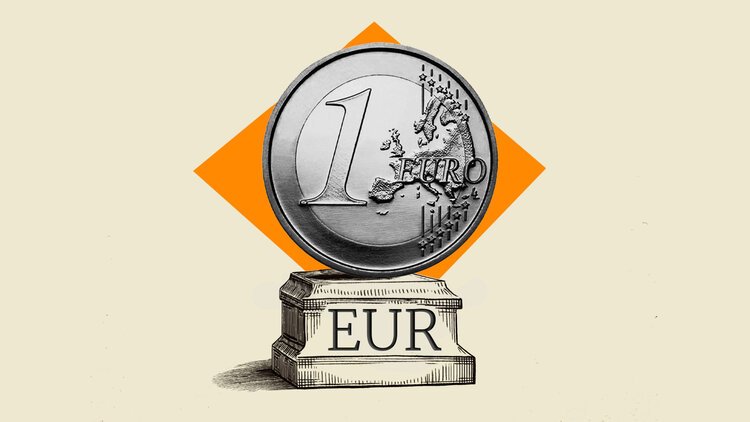- EUR/CAD retreats to near 1.6100 after refreshing a seven-year high around 1.6187.
- Investors await Trump-Zelenskyy meeting, and ECB Lagarde’s speech.
- Canadian CPI is expected to have grown at a faster pace of 0.4% on month in July.
The EUR/CAD pair retraces to near the round-level figure of 1.6100 during Monday’s European trading session after posting a fresh seven-year high around 1.6187 in early Asian trading hours. The pair corrects as the Euro (EUR) underperforms its peers, with investors awaiting the meeting between United States (US) President Donald Trump, Ukrainian President Volodymyr Zelenskyy, and a few NATO members at the White House during the day.
Euro PRICE Today
The table below shows the percentage change of Euro (EUR) against listed major currencies today. Euro was the weakest against the New Zealand Dollar.
| USD | EUR | GBP | JPY | CAD | AUD | NZD | CHF | |
|---|---|---|---|---|---|---|---|---|
| USD | 0.25% | 0.08% | 0.21% | -0.17% | -0.02% | -0.21% | 0.17% | |
| EUR | -0.25% | -0.19% | -0.07% | -0.42% | -0.26% | -0.49% | -0.08% | |
| GBP | -0.08% | 0.19% | 0.02% | -0.25% | -0.08% | -0.32% | 0.05% | |
| JPY | -0.21% | 0.07% | -0.02% | -0.35% | -0.20% | -0.39% | -0.04% | |
| CAD | 0.17% | 0.42% | 0.25% | 0.35% | 0.13% | -0.04% | 0.30% | |
| AUD | 0.02% | 0.26% | 0.08% | 0.20% | -0.13% | -0.24% | 0.11% | |
| NZD | 0.21% | 0.49% | 0.32% | 0.39% | 0.04% | 0.24% | 0.34% | |
| CHF | -0.17% | 0.08% | -0.05% | 0.04% | -0.30% | -0.11% | -0.34% |
The heat map shows percentage changes of major currencies against each other. The base currency is picked from the left column, while the quote currency is picked from the top row. For example, if you pick the Euro from the left column and move along the horizontal line to the US Dollar, the percentage change displayed in the box will represent EUR (base)/USD (quote).
Leaders from Europe and US President Trump would discuss about ending war in Ukraine immediately. Market experts believe that Trump would persuade Ukrainian President Zelenskyy to agree to concessions proposed by Russian leader Vladimir Putin in the Alaska summit on Friday.
The scenario of a permanent peace between Russia and Ukraine will be favorable for the Euro as it will improve the supply chain of the old continent.
On the domestic front, investors will focus on European Central Bank (ECB) President Christine Lagarde’s speech, who is scheduled to speak on Wednesday at the World Economic Forum in Geneva.
In Canada, investors await the Consumer Price Index (CPI) data for July, which will be published on Tuesday. Financial market participants will closely monitor the inflation data as it will influence market expectations for the Bank of Canada’s (BoC) monetary policy outlook. Month-on-month Canadian inflation is estimated to have growth at a faster pace of 0.4%.
Euro FAQs
The Euro is the currency for the 19 European Union countries that belong to the Eurozone. It is the second most heavily traded currency in the world behind the US Dollar. In 2022, it accounted for 31% of all foreign exchange transactions, with an average daily turnover of over $2.2 trillion a day.
EUR/USD is the most heavily traded currency pair in the world, accounting for an estimated 30% off all transactions, followed by EUR/JPY (4%), EUR/GBP (3%) and EUR/AUD (2%).
The European Central Bank (ECB) in Frankfurt, Germany, is the reserve bank for the Eurozone. The ECB sets interest rates and manages monetary policy.
The ECB’s primary mandate is to maintain price stability, which means either controlling inflation or stimulating growth. Its primary tool is the raising or lowering of interest rates. Relatively high interest rates – or the expectation of higher rates – will usually benefit the Euro and vice versa.
The ECB Governing Council makes monetary policy decisions at meetings held eight times a year. Decisions are made by heads of the Eurozone national banks and six permanent members, including the President of the ECB, Christine Lagarde.
Eurozone inflation data, measured by the Harmonized Index of Consumer Prices (HICP), is an important econometric for the Euro. If inflation rises more than expected, especially if above the ECB’s 2% target, it obliges the ECB to raise interest rates to bring it back under control.
Relatively high interest rates compared to its counterparts will usually benefit the Euro, as it makes the region more attractive as a place for global investors to park their money.
Data releases gauge the health of the economy and can impact on the Euro. Indicators such as GDP, Manufacturing and Services PMIs, employment, and consumer sentiment surveys can all influence the direction of the single currency.
A strong economy is good for the Euro. Not only does it attract more foreign investment but it may encourage the ECB to put up interest rates, which will directly strengthen the Euro. Otherwise, if economic data is weak, the Euro is likely to fall.
Economic data for the four largest economies in the euro area (Germany, France, Italy and Spain) are especially significant, as they account for 75% of the Eurozone’s economy.
Another significant data release for the Euro is the Trade Balance. This indicator measures the difference between what a country earns from its exports and what it spends on imports over a given period.
If a country produces highly sought after exports then its currency will gain in value purely from the extra demand created from foreign buyers seeking to purchase these goods. Therefore, a positive net Trade Balance strengthens a currency and vice versa for a negative balance.







